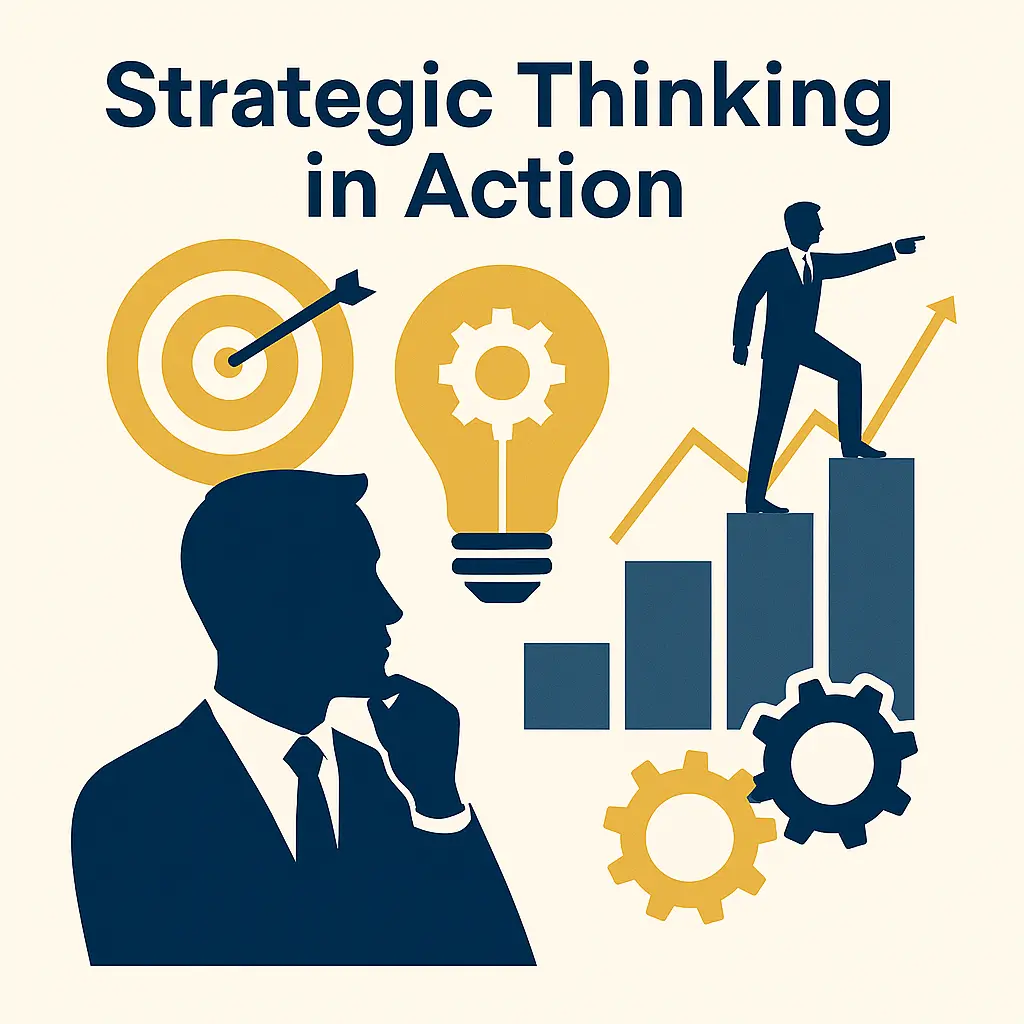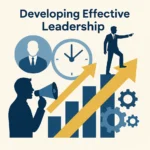Every successful business transformation starts with a powerful idea—but the difference between good intentions and real results lies in how leaders translate vision into structured, executable action. This process, often underestimated, is what we call strategic thinking in action.
What Is Strategic Thinking?
Strategic thinking isn’t just high-level daydreaming. It’s the discipline of aligning long-term goals with current capabilities and developing a realistic, adaptable roadmap to get there. It involves foresight, pattern recognition, stakeholder awareness, and decision-making under uncertainty.
From Vision to Execution: The Leadership Gap
Vision gives direction. Strategy defines the path. But execution is what brings it all to life. Many leaders excel at setting goals, yet struggle to convert them into momentum. Strategic thinkers close this gap by:
- Clarifying outcomes before tactics
- Designing scalable frameworks to act on strategy
- Aligning teams with clearly communicated priorities
- Measuring feedback to guide adjustments in real time
Core Pillars of Strategic Thinking in Practice
1. Define the End State
Start with the end in mind. Great leaders visualize not just what success looks like but how it feels, functions, and operates across the organization. This clarity becomes the reference point for all decisions.
2. Diagnose the Present Reality
Strategy fails when it ignores context. Strategic thinkers assess current resources, culture, and constraints honestly. They map the gap between today’s state and tomorrow’s goals.
3. Prioritize Actions with Leverage
Not all tasks are equal. Strategic leaders identify leverage points—those actions that yield exponential results. This might involve hiring a key leader, shifting focus to a new customer segment, or automating repetitive work.
4. Communicate the “Why” Consistently
Teams follow clarity, not just authority. Strategic thinkers articulate the bigger picture repeatedly and in different formats—whether in 1:1s, team meetings, or dashboards. It creates alignment and ownership.
5. Integrate Feedback Loops
Strategy is dynamic. It lives through feedback. Great leaders design reflection cycles: retrospectives, data reviews, customer interviews. These loops make strategy adaptive, not static.
Example: Strategic Thinking in a Scaling Tech Company
A mid-stage SaaS company wanted to expand into two new markets. The CEO had a vision but no roadmap. A strategic advisor helped define market-entry scenarios, reorganize internal teams around agile pods, and roll out OKRs tied to growth metrics. Within six months, the company doubled its user base in both regions while reducing churn by 18%.
How Strategic Thinking Builds Culture
Strategy isn’t just about direction—it shapes how people think. Leaders who apply strategic thinking build cultures that value reflection, long-term focus, and measured experimentation. Over time, this mindset cascades and multiplies.
Best Practices for Strategic Thinkers
- Write more: Strategy gains clarity when written down. Use simple language to describe complex paths.
- Ask “What would success look like?” often: Keep end goals visible and evolving.
- Combine data and narrative: Logic drives plans, but stories drive belief.
- Make time for reflection: Weekly strategic reviews help recalibrate direction and avoid reactive leadership.
Bridging Silos with Strategic Conversations
One of the silent killers of strategic execution is siloed communication. Departments may have strong internal goals but lack context on how their work contributes to the broader company mission. Strategic thinkers break down these barriers by initiating cross-functional conversations that align language, priorities, and expectations. This alignment accelerates collaboration and reduces friction in execution.
The Long-Term Payoff of Strategic Discipline
Investing in strategic thinking isn’t just a short-term advantage—it compounds over time. Organizations that practice strategic discipline gain better foresight, avoid wasteful initiatives, and build cultures of intentional growth. Leaders who embody this mindset not only achieve better results but inspire others to elevate their thinking as well.
Conclusion: Strategy Without Action Is Just Ambition
Vision without execution is a missed opportunity. Strategic thinking in action is how today’s leaders guide their organizations through complexity with intention, clarity, and impact. It’s a mindset—and a method—you can cultivate.
Related Links:




